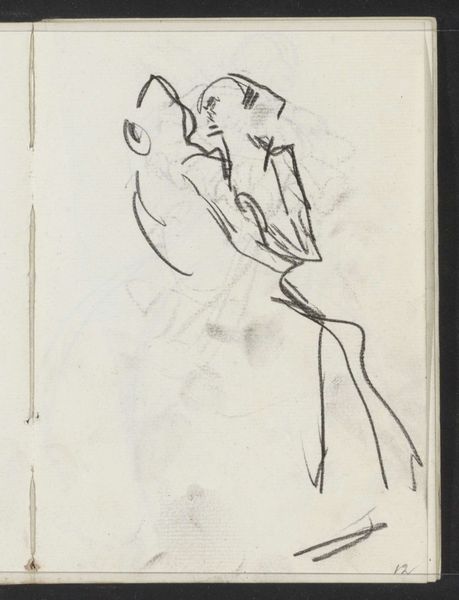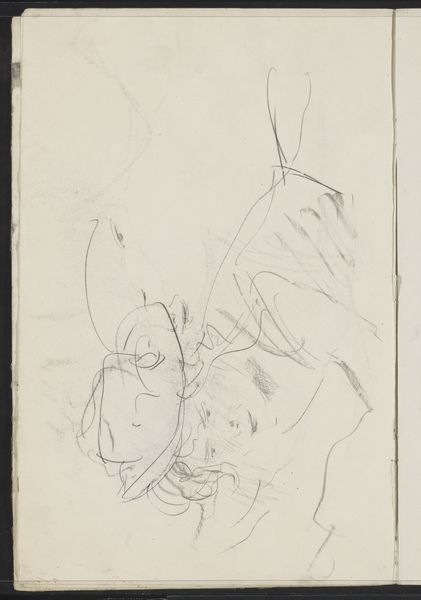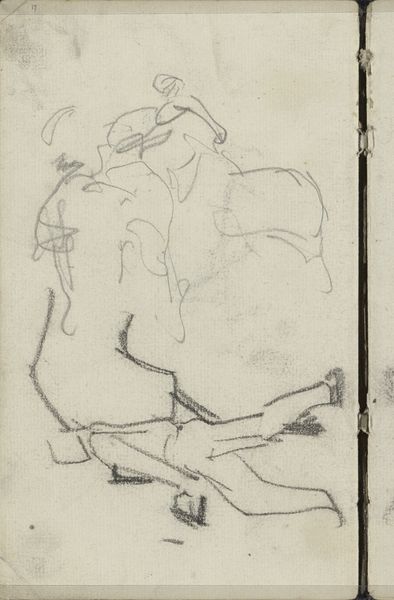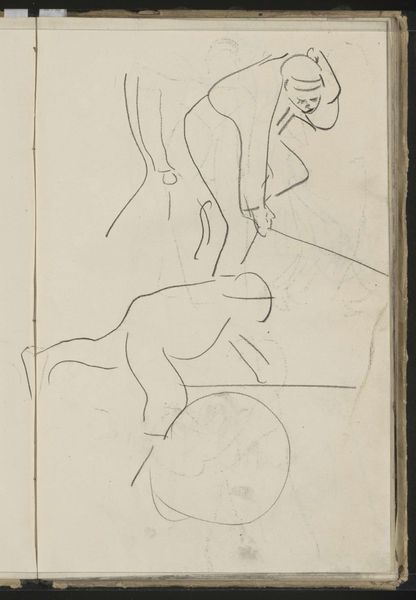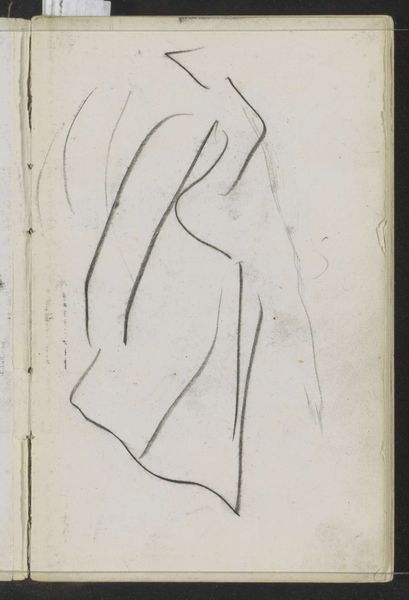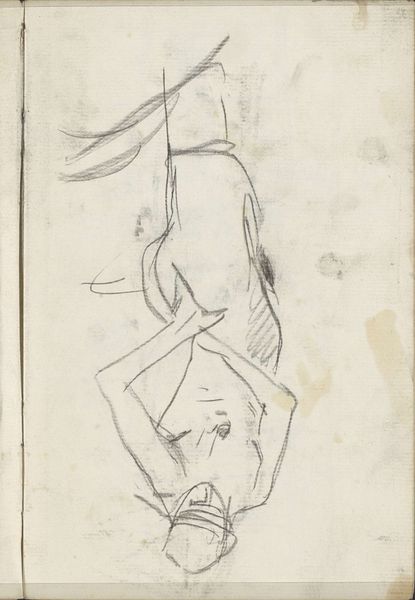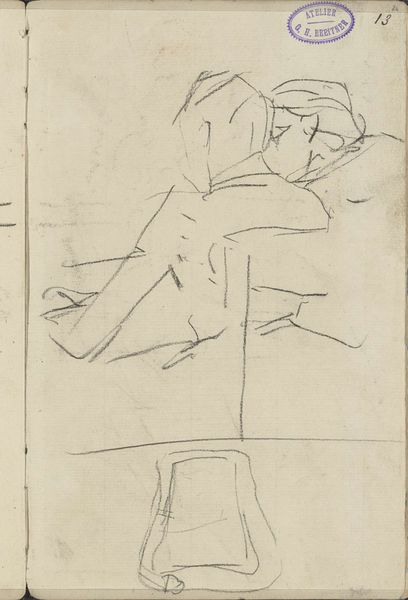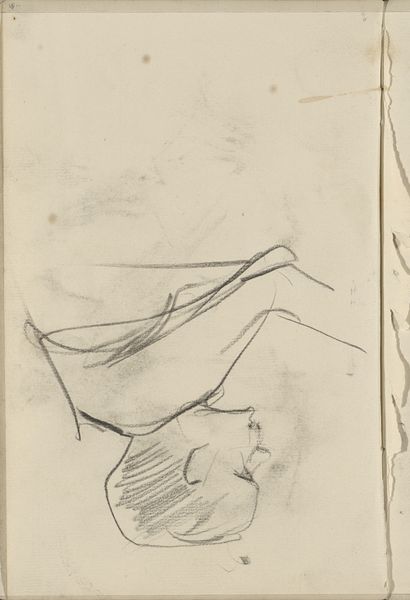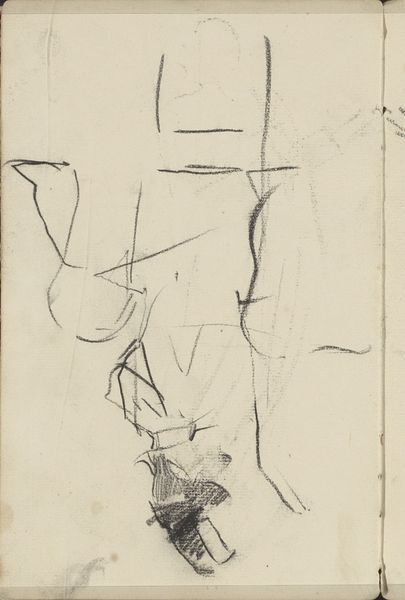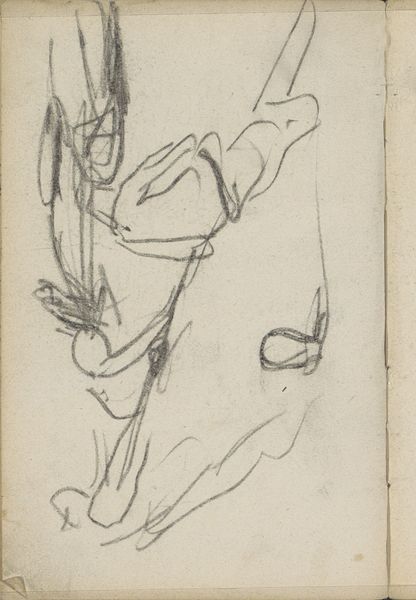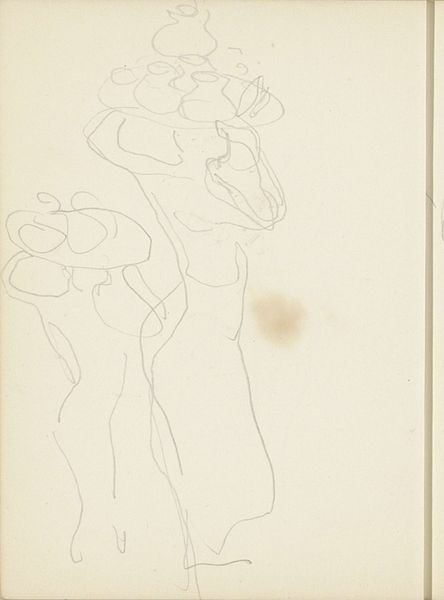
drawing, pencil
#
drawing
#
imaginative character sketch
#
light pencil work
#
art-nouveau
#
landscape
#
figuration
#
personal sketchbook
#
idea generation sketch
#
character sketch
#
ink drawing experimentation
#
pen-ink sketch
#
pencil
#
sketchbook drawing
#
storyboard and sketchbook work
#
sketchbook art
Copyright: Rijks Museum: Open Domain
Curator: Immediately, there's an arresting contrast between the delicate rendering of the leaves above and what seems to be a distorted, almost grotesque figure beneath them. It creates a real tension in the image. Editor: Here we have "Tak met bladeren en een kop met een hoed," or "Branch with leaves and a head with a hat", a sketch by Carel Adolph Lion Cachet, dating sometime between 1874 and 1945. It's a pencil drawing, currently residing here at the Rijksmuseum. Curator: It feels incredibly personal, almost like a page ripped straight from the artist's private sketchbook, imbued with a stream-of-consciousness feel. Is it an attempt at representing the darker aspects of human consciousness or society, perhaps? Editor: Considering the tumultuous times spanned by its creation—from the height of imperialism through both World Wars—it's easy to interpret such anxiety. I think art historians often place Cachet within the context of Dutch Art Nouveau and his broader interest in the sociopolitical role of visual culture and graphic design in particular. Curator: So, are you suggesting it critiques oppressive power structures, maybe with the distorted figure representing a subjugated populace overshadowed by nature's indifferent beauty? The "hat," perhaps, becomes symbolic of imposed authority? Editor: That’s definitely a strong interpretation. And although speculative, these are very real social tensions during his career. The loose sketch format offers an interesting entry point, it reminds me of quick studies for character development, where societal archetypes get explored via physical distortions and adornments. Curator: That also plays into ongoing postcolonial and feminist discourse. Perhaps the artist is unconsciously, or consciously, engaging with the performativity of gender, power and its manifestation in bodily forms and adornment. Or even how one generation might carry these issues over its back, symbolized through this vague bent pose. Editor: It is such an interesting piece, to reconsider sketches in this way. It reveals an image with interesting insight to societal pressures of the day that Cachet faced. Thanks to how those themes still carry implications now.
Comments
No comments
Be the first to comment and join the conversation on the ultimate creative platform.
